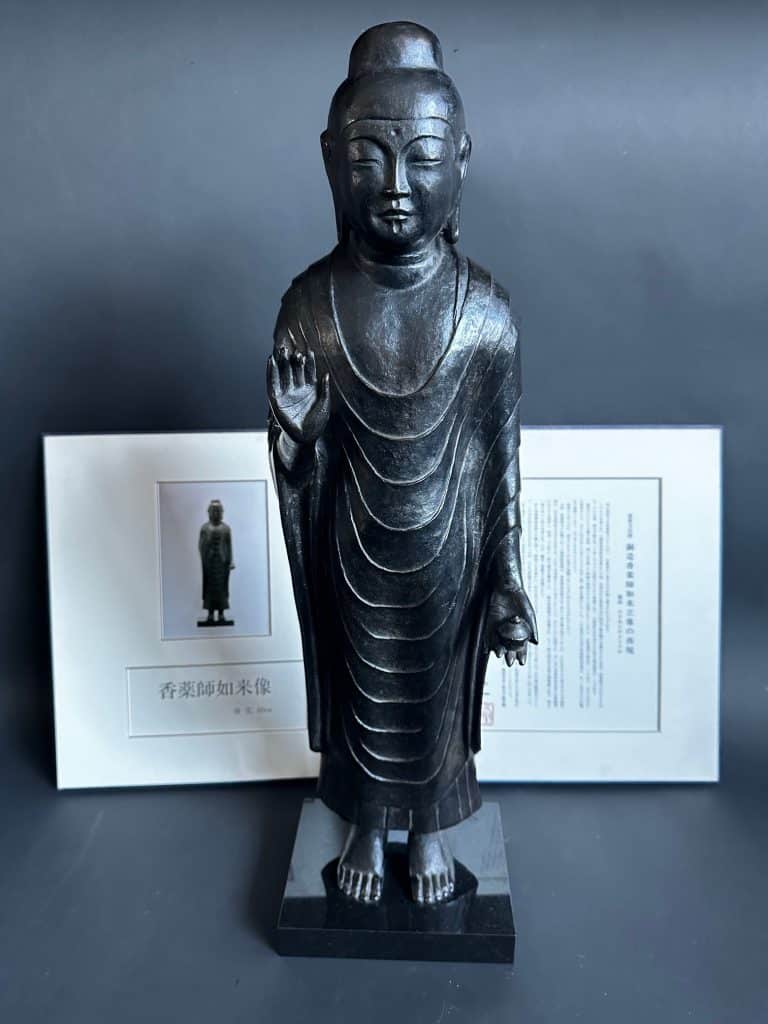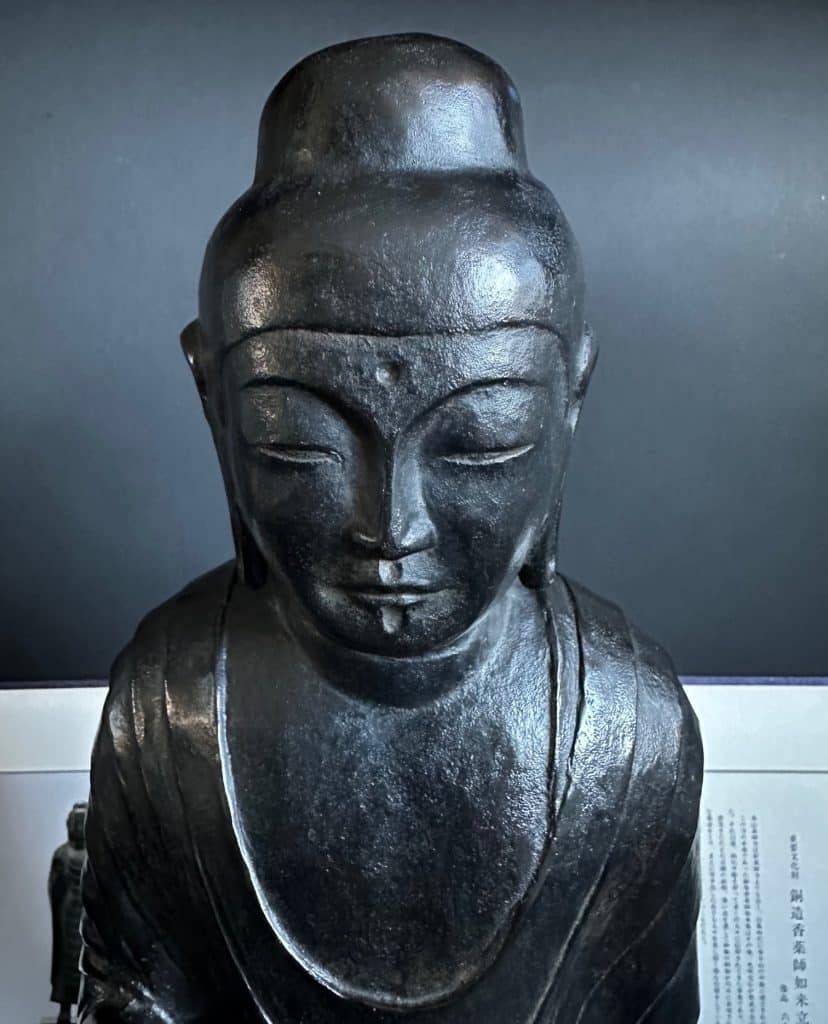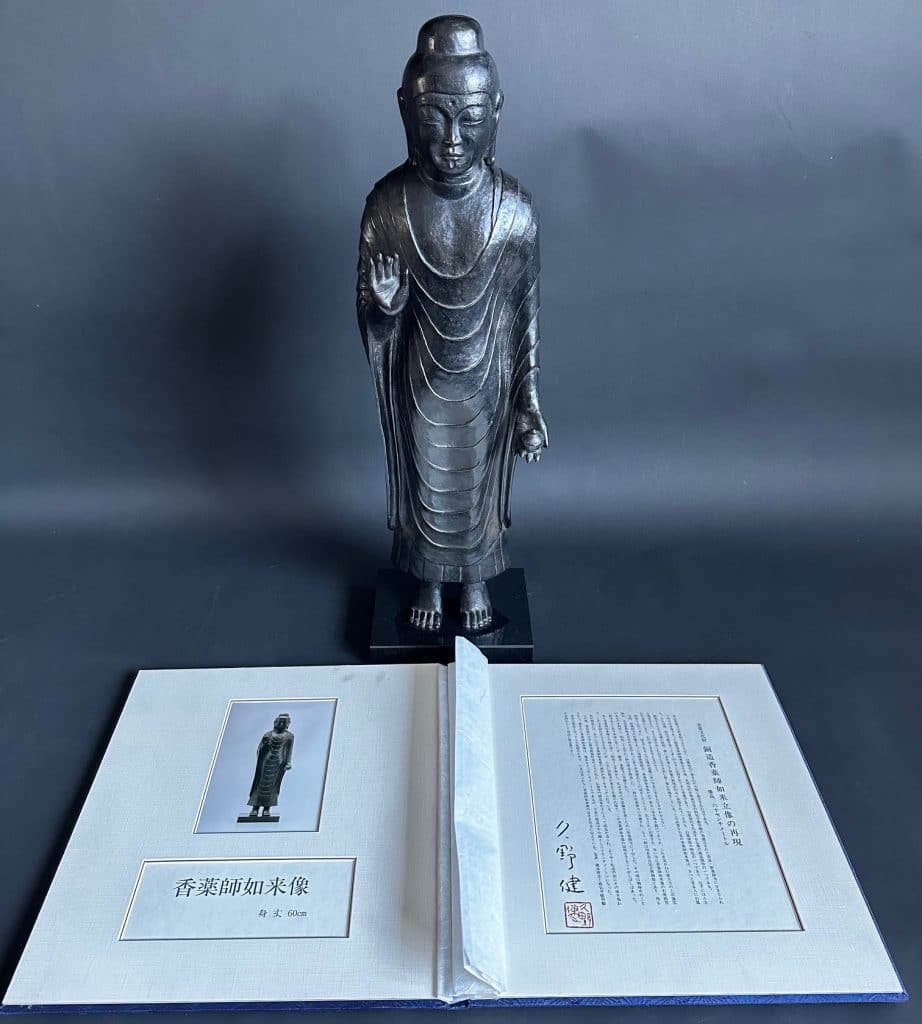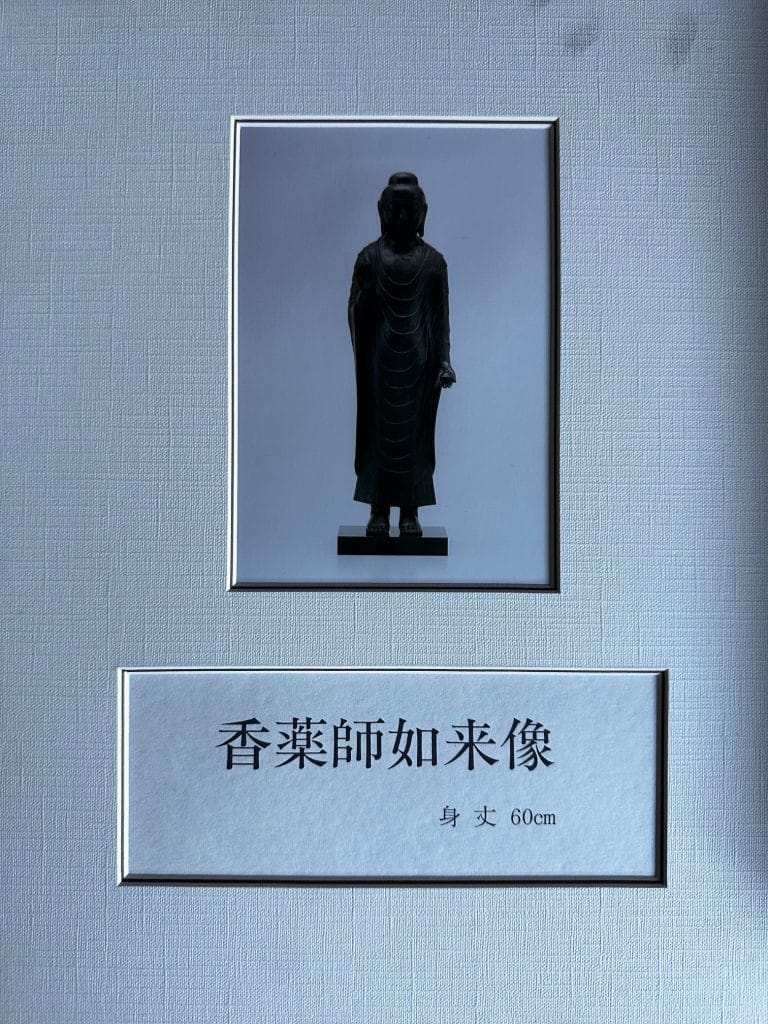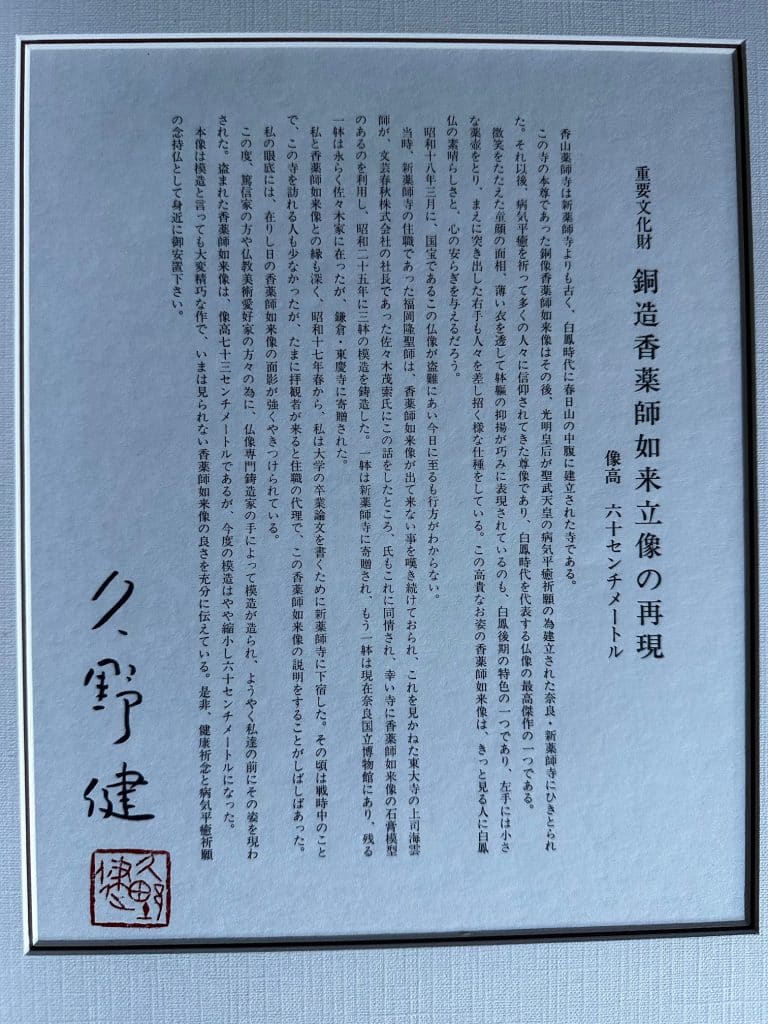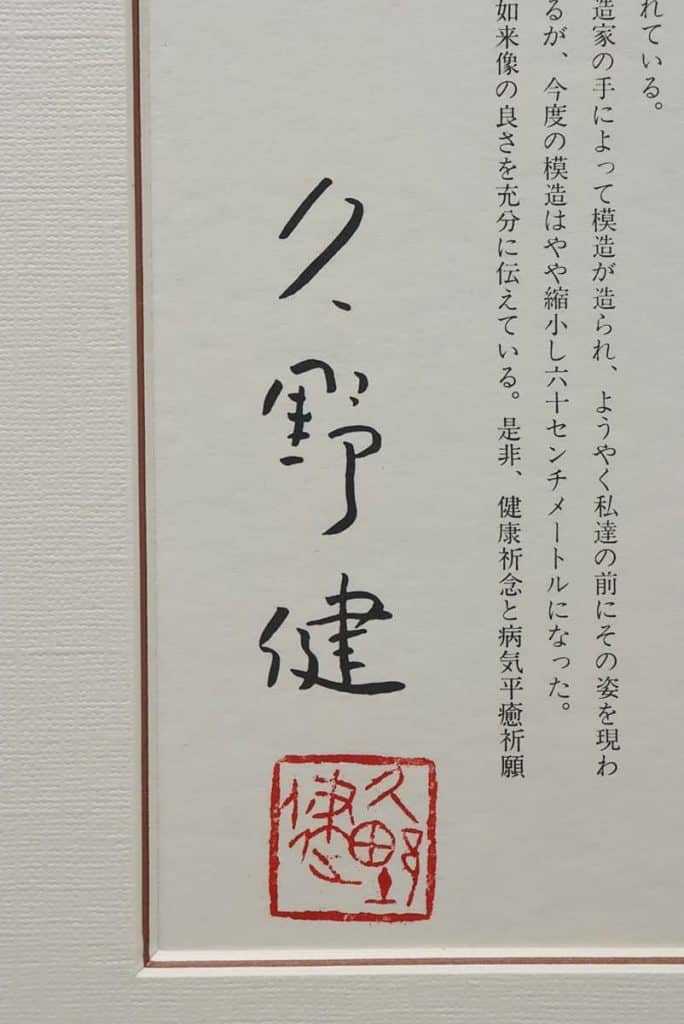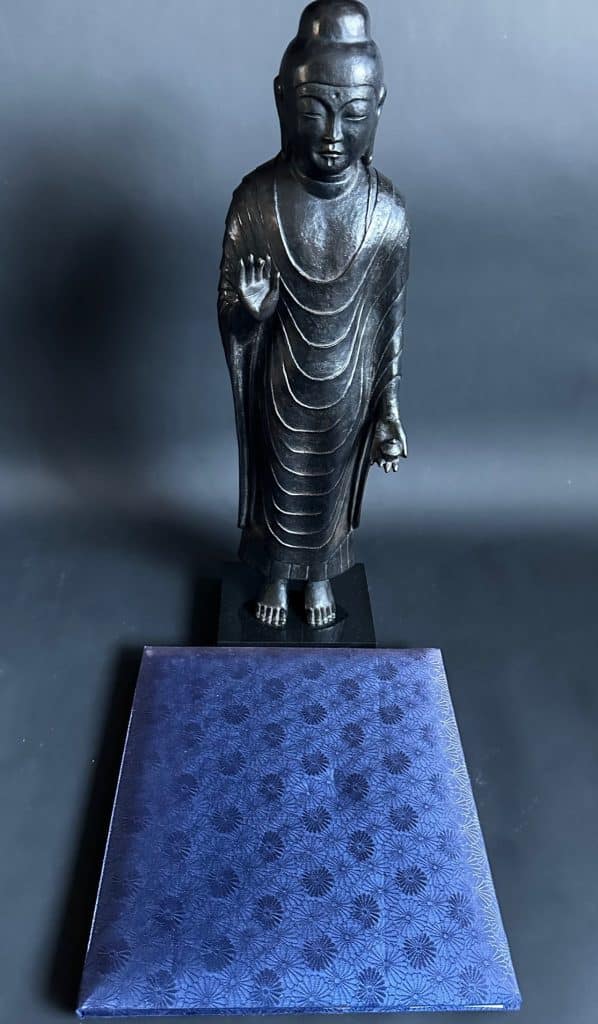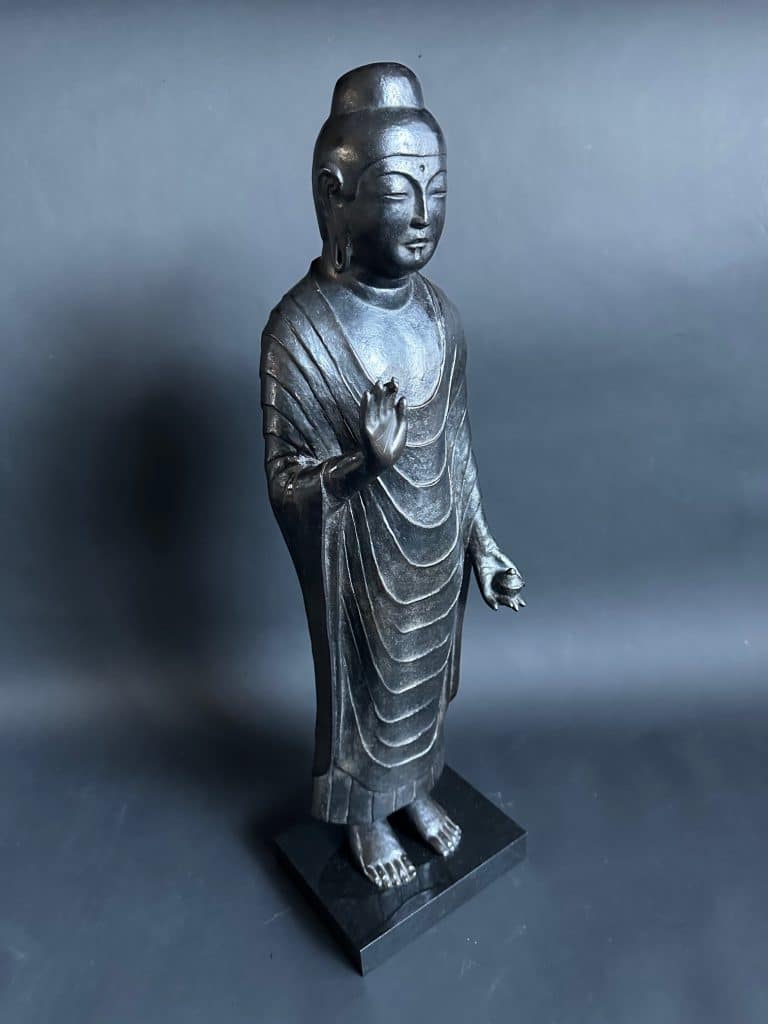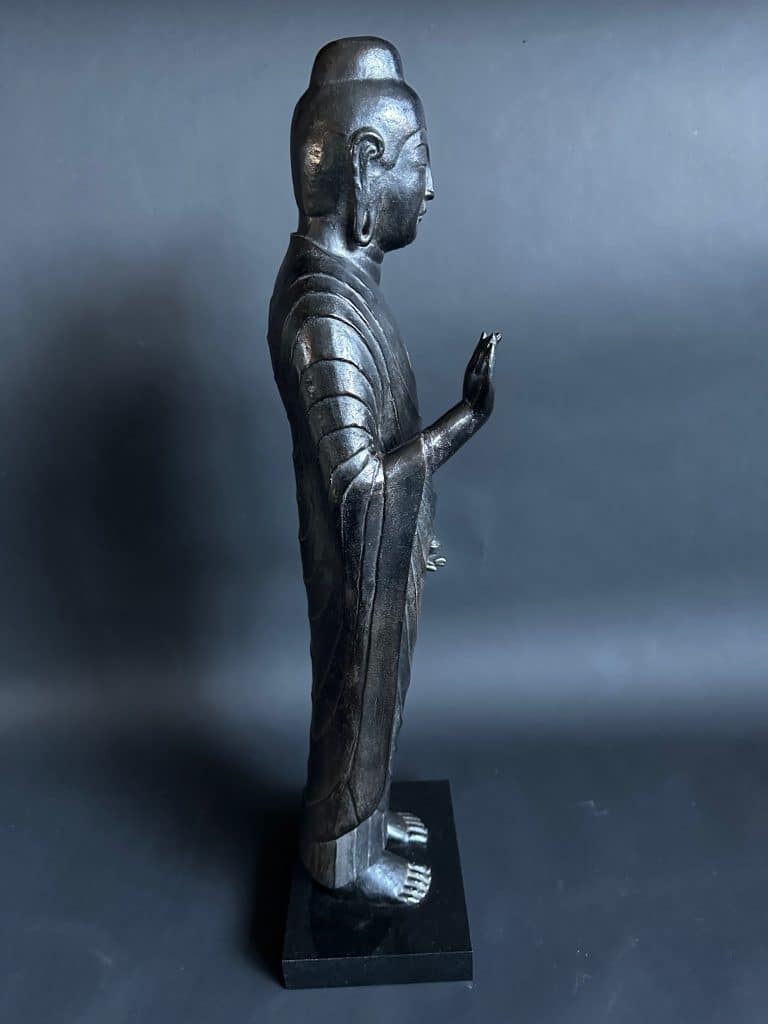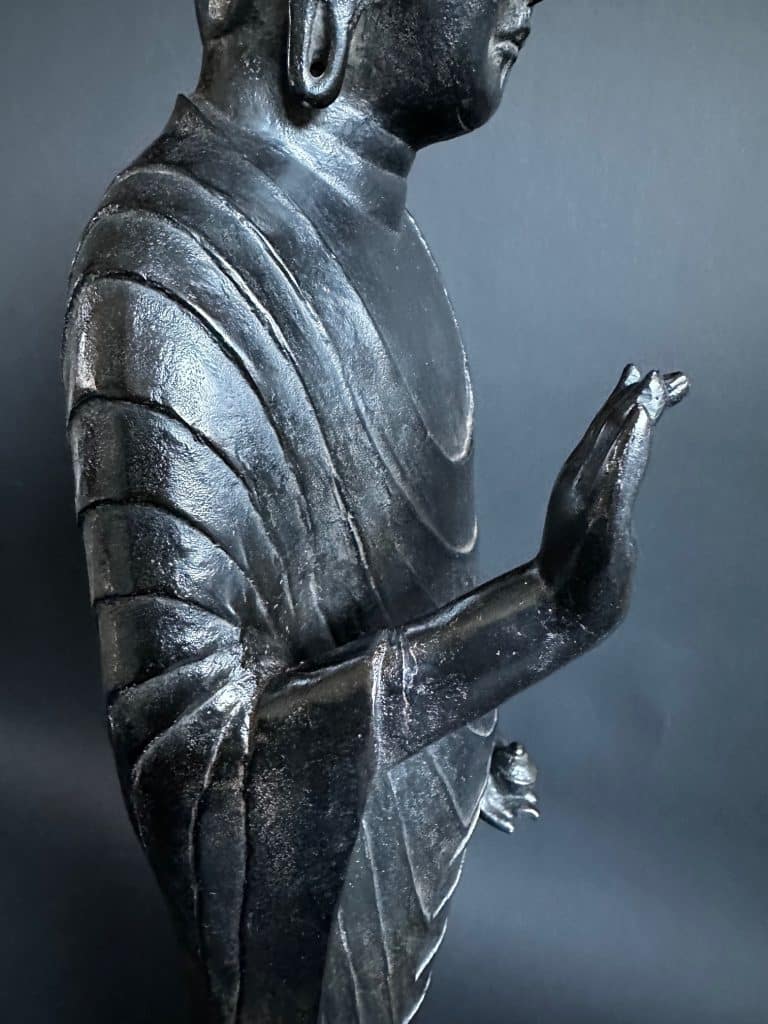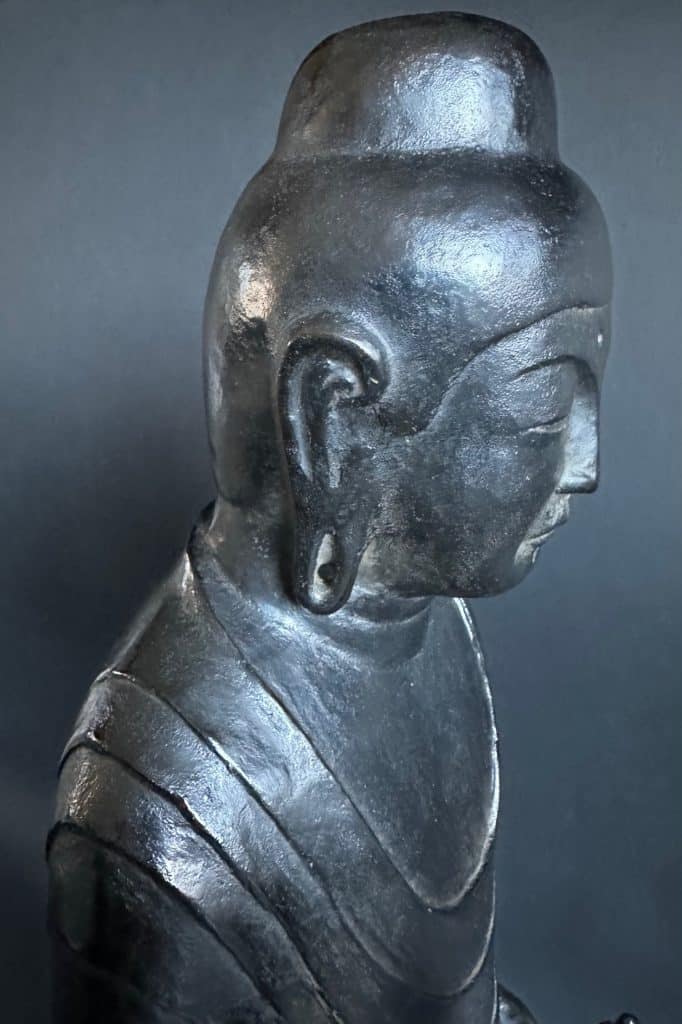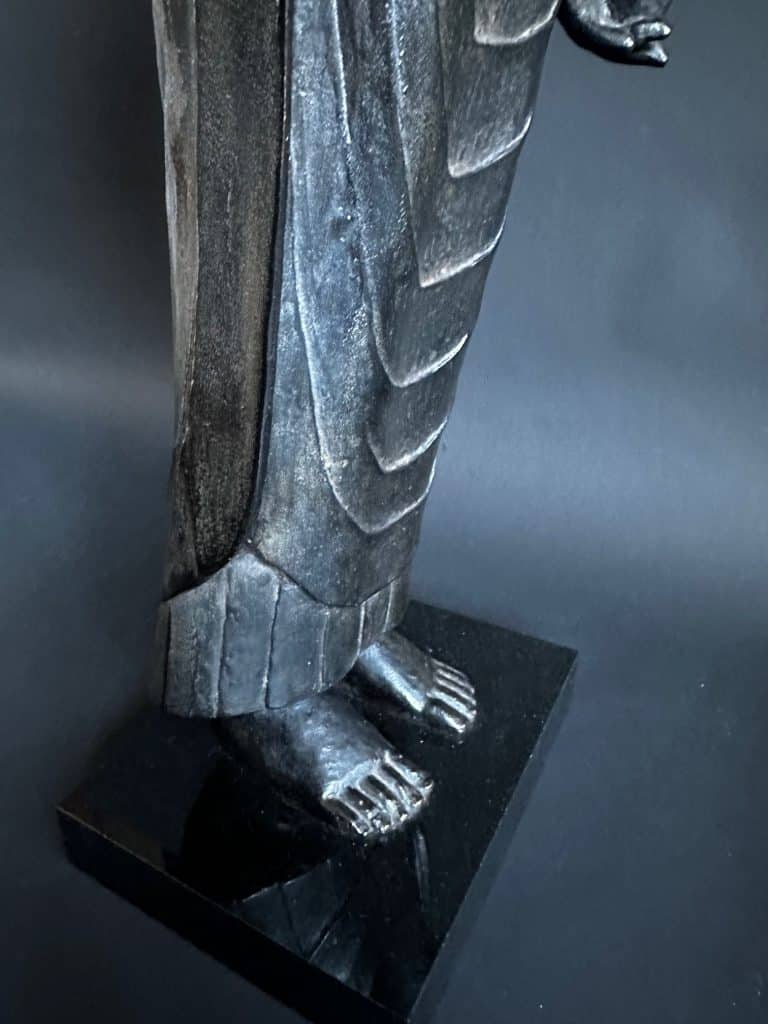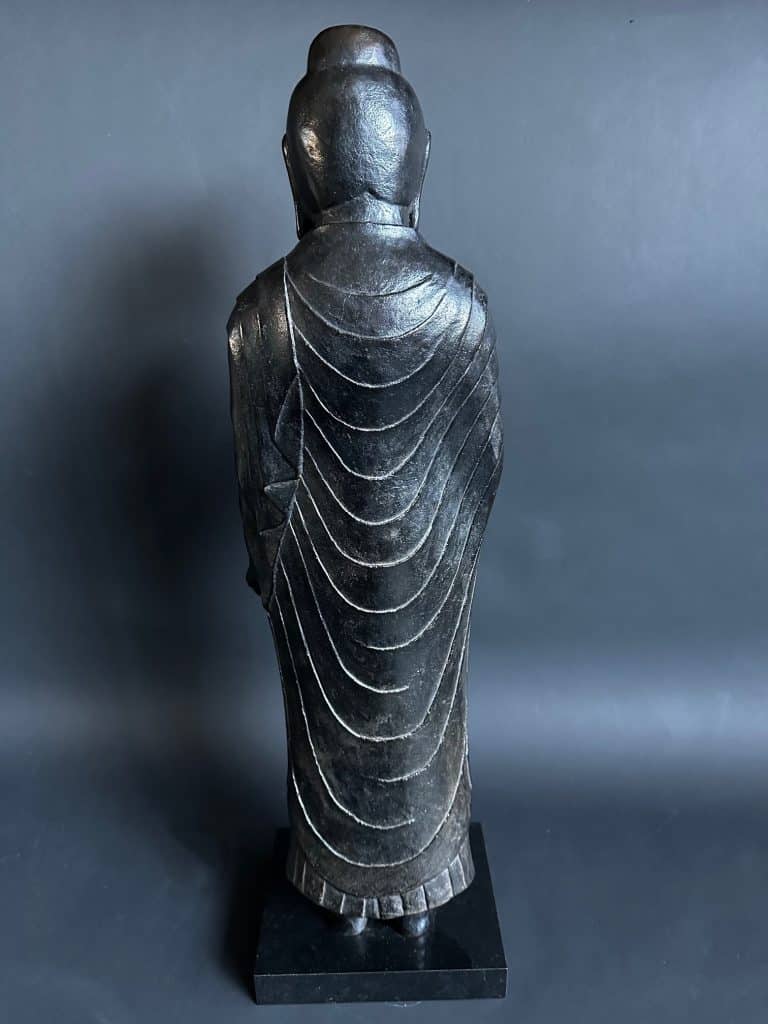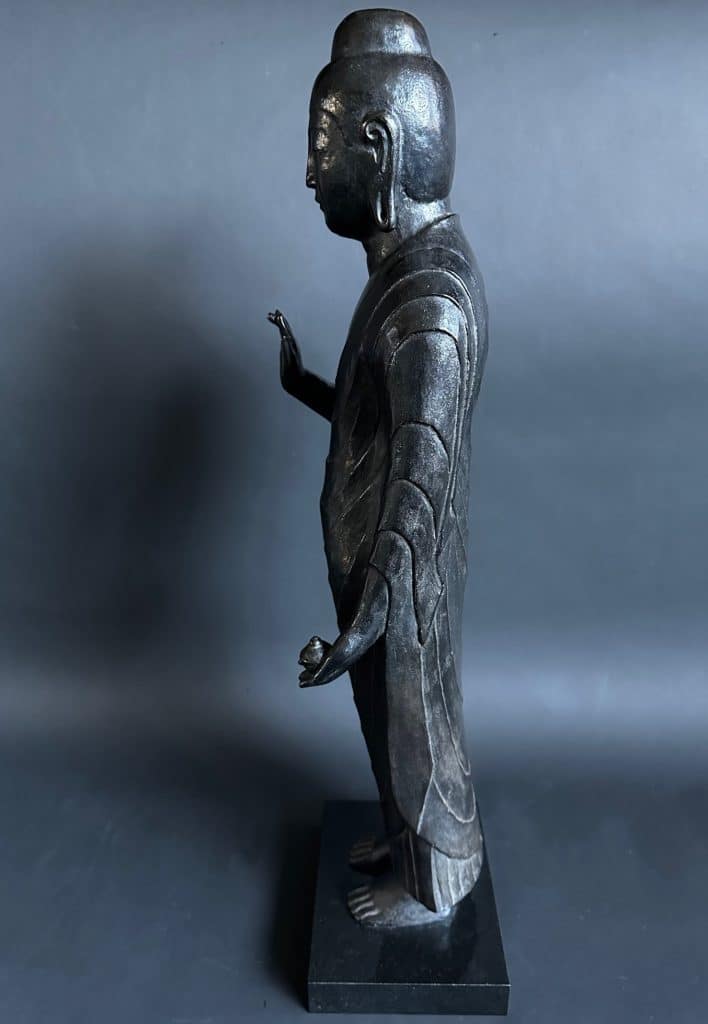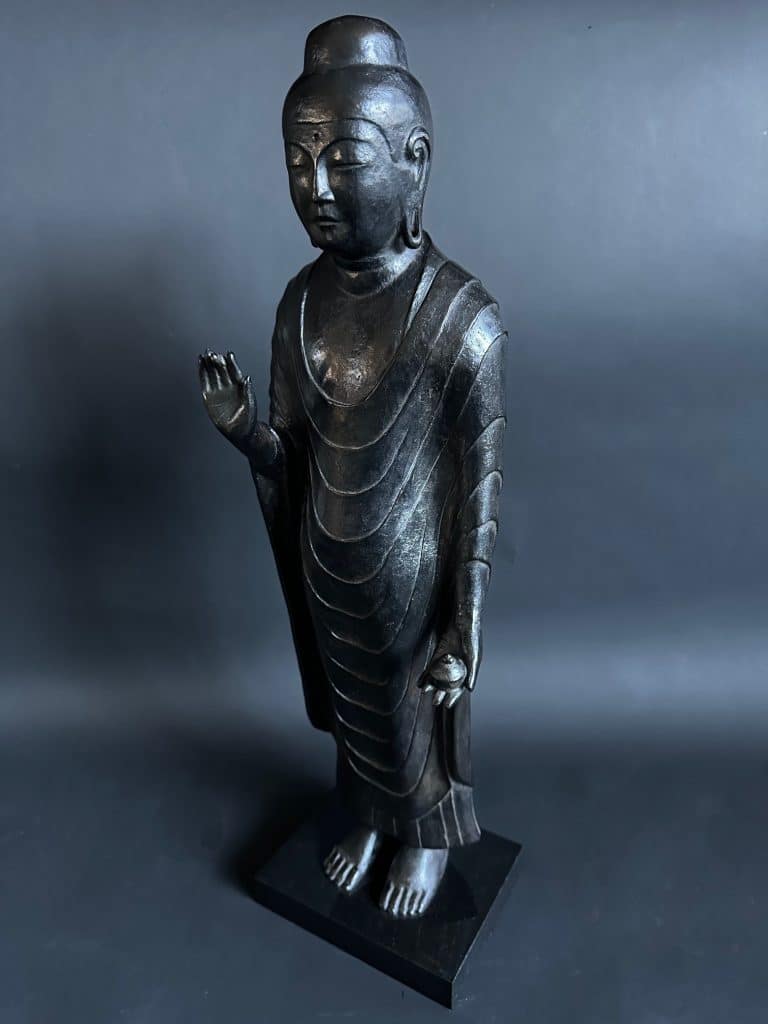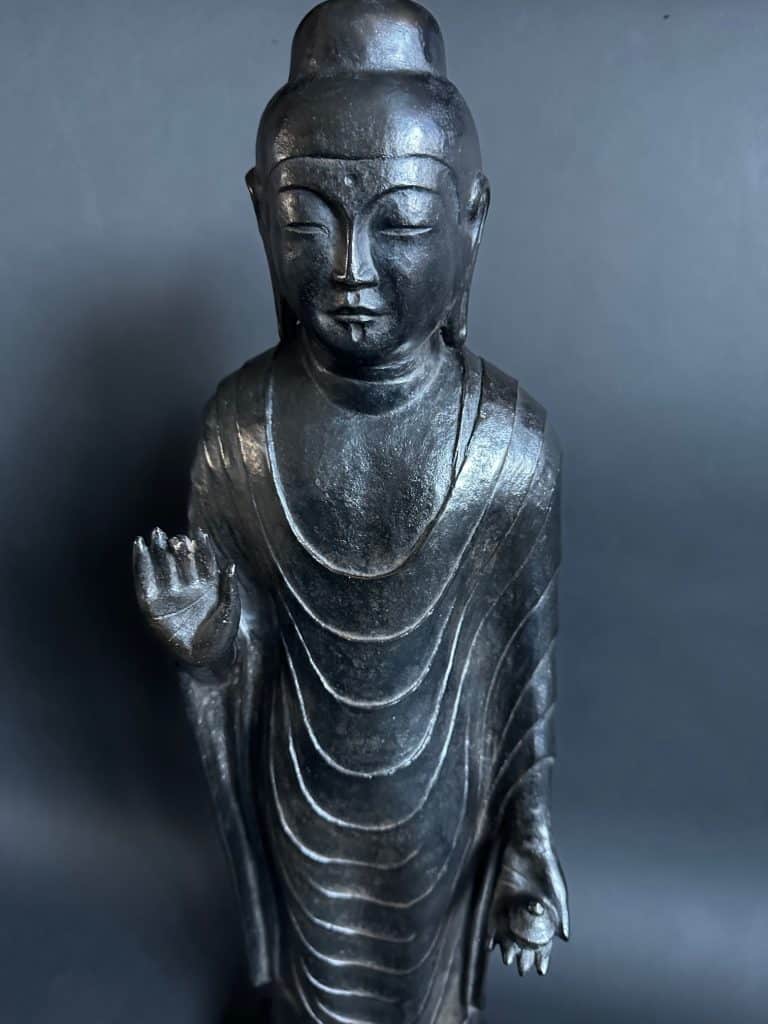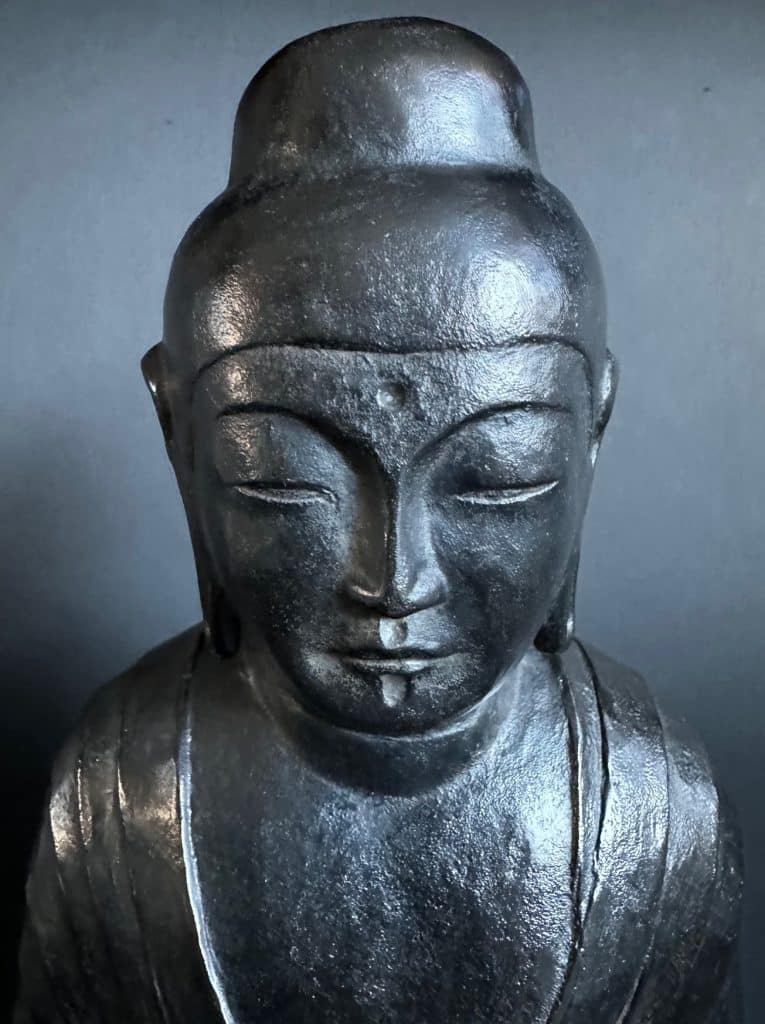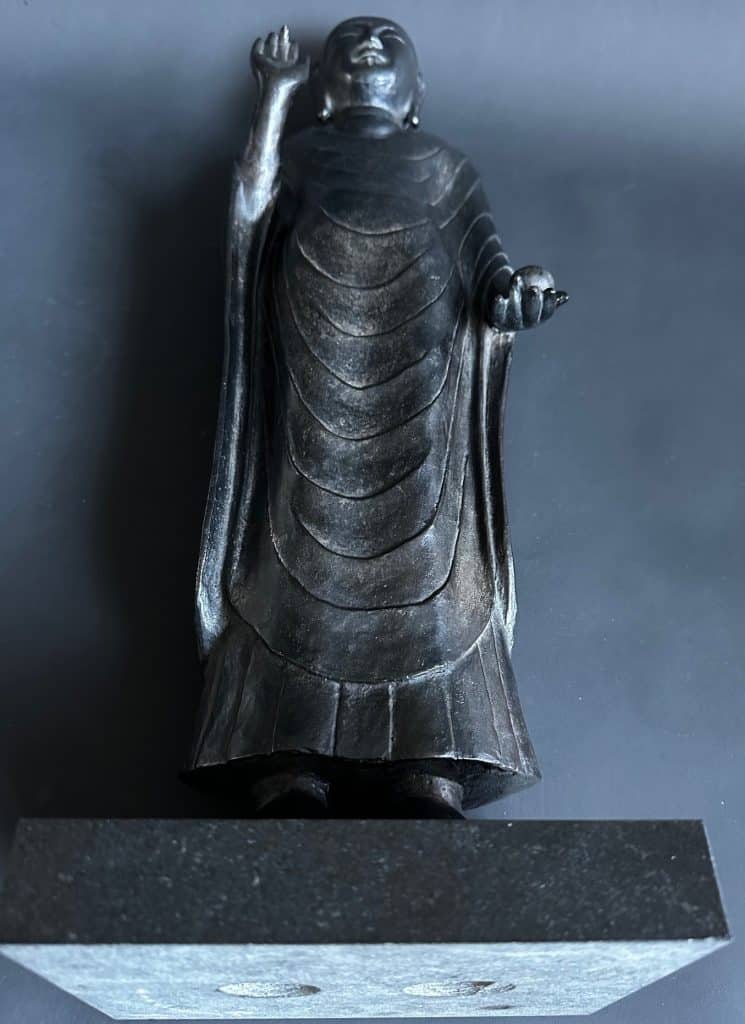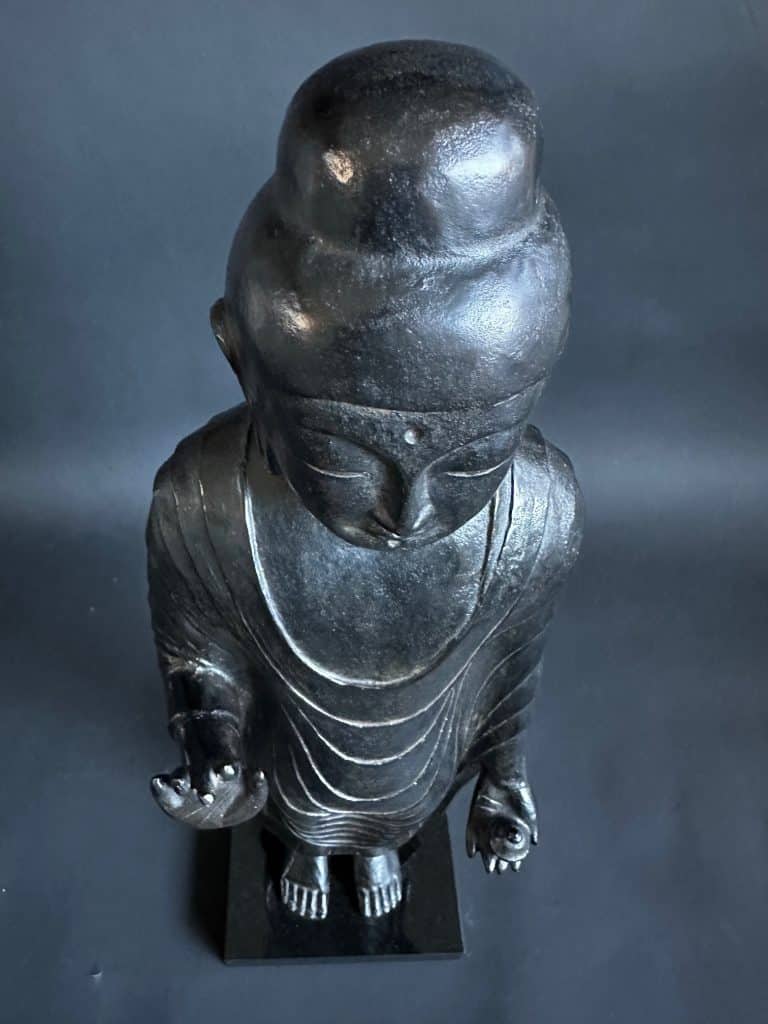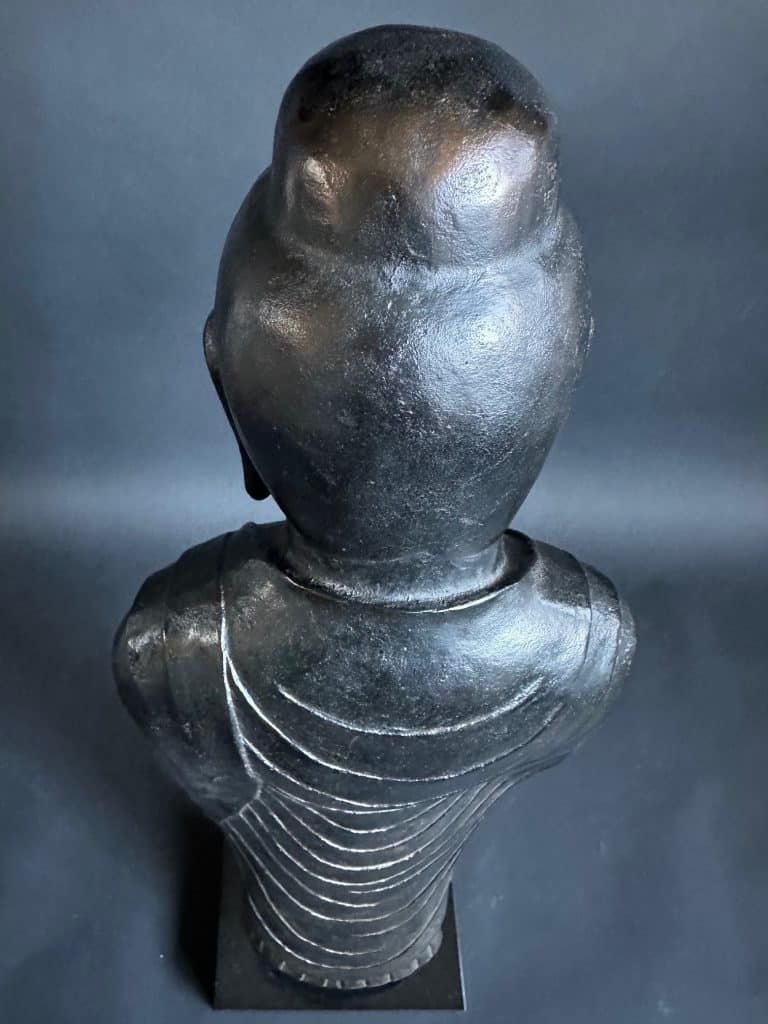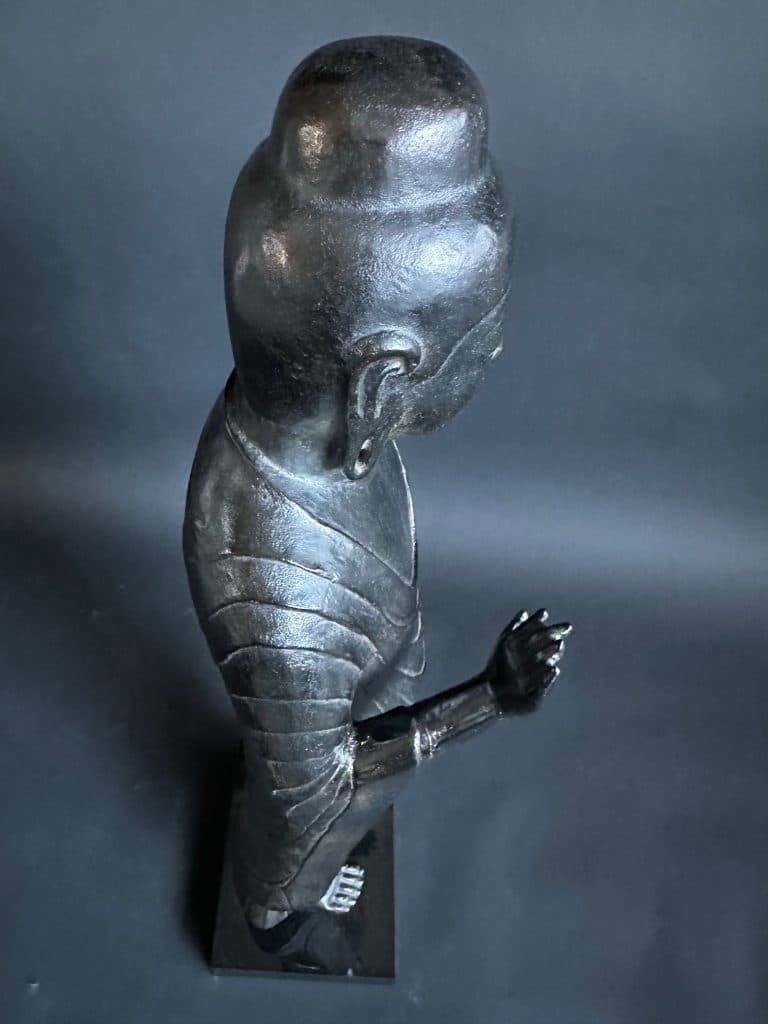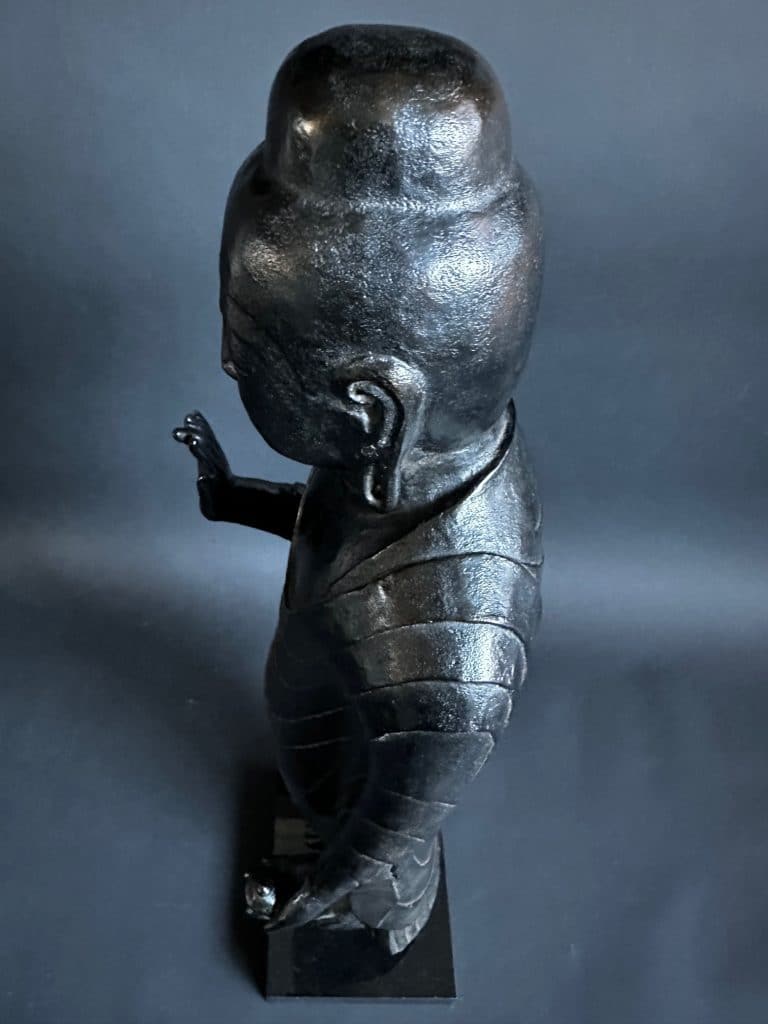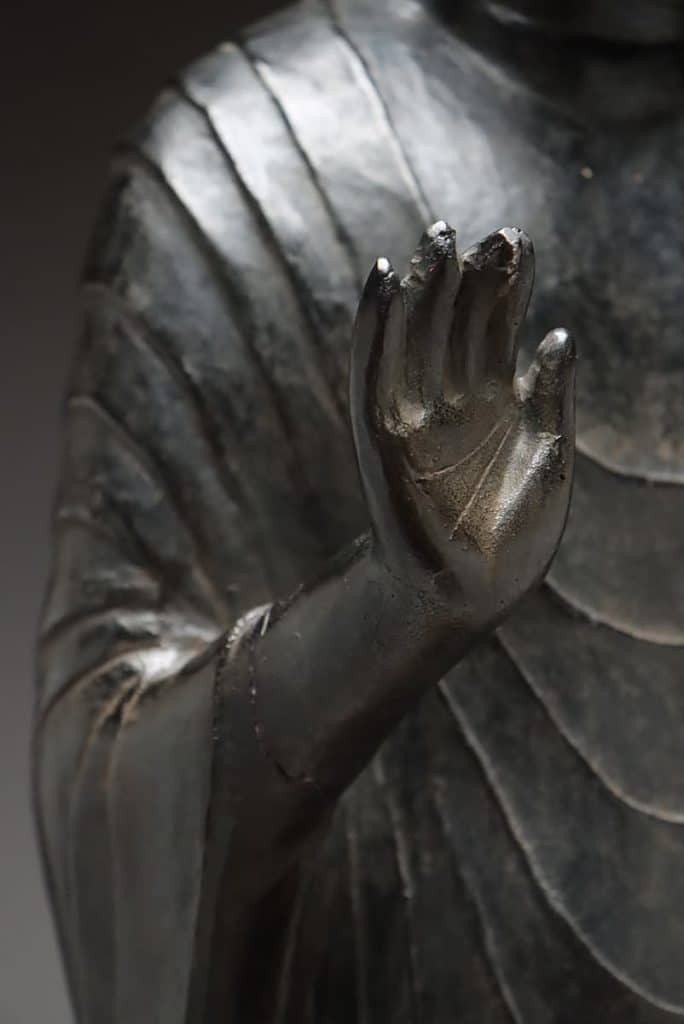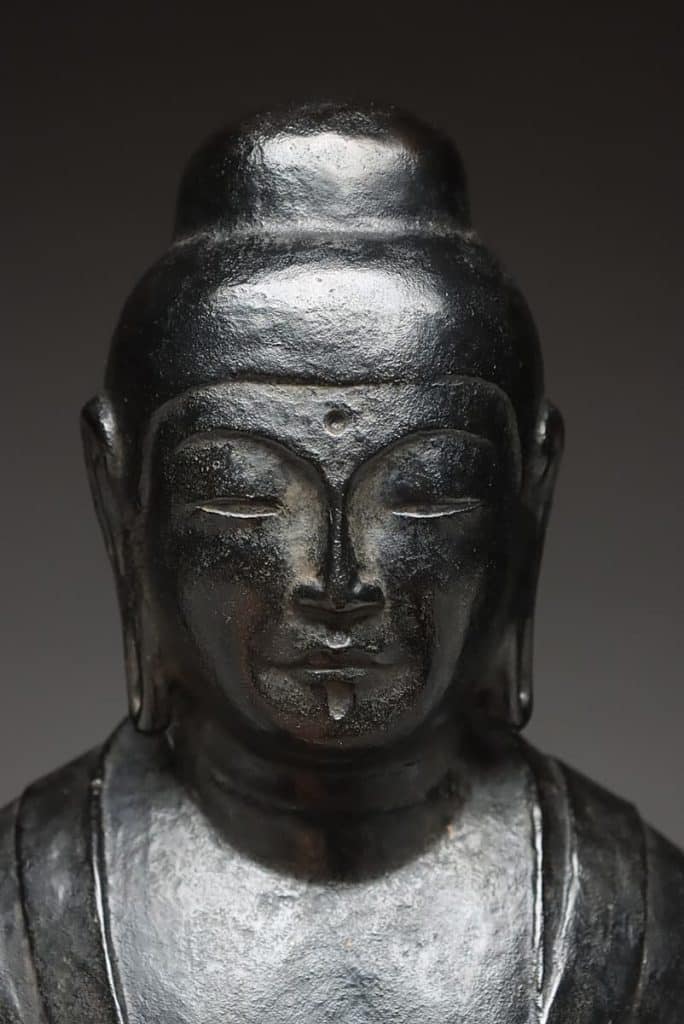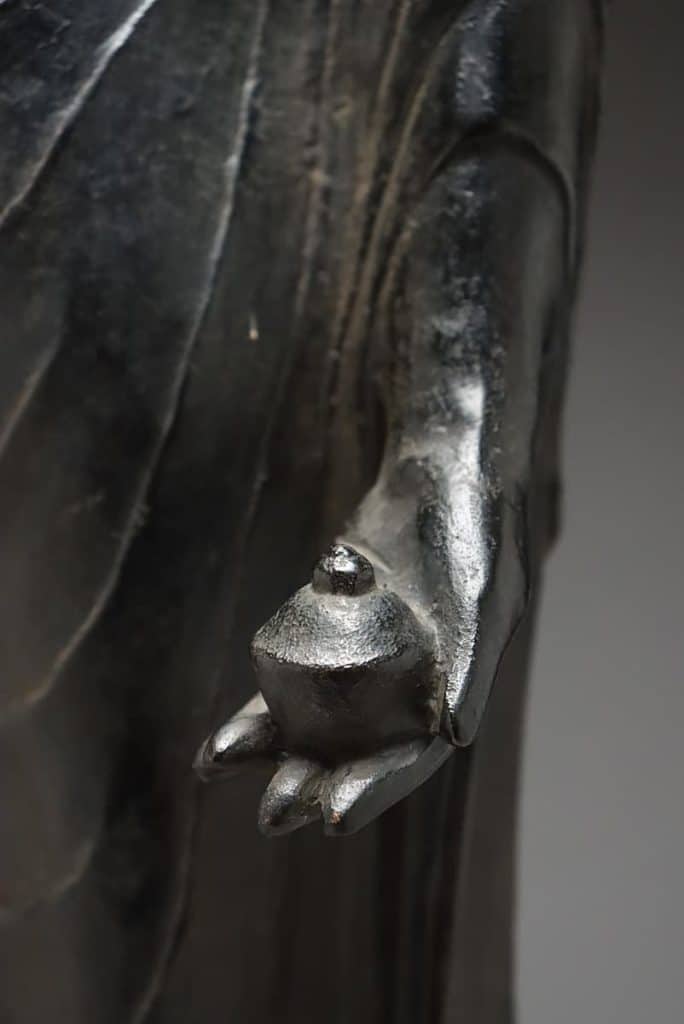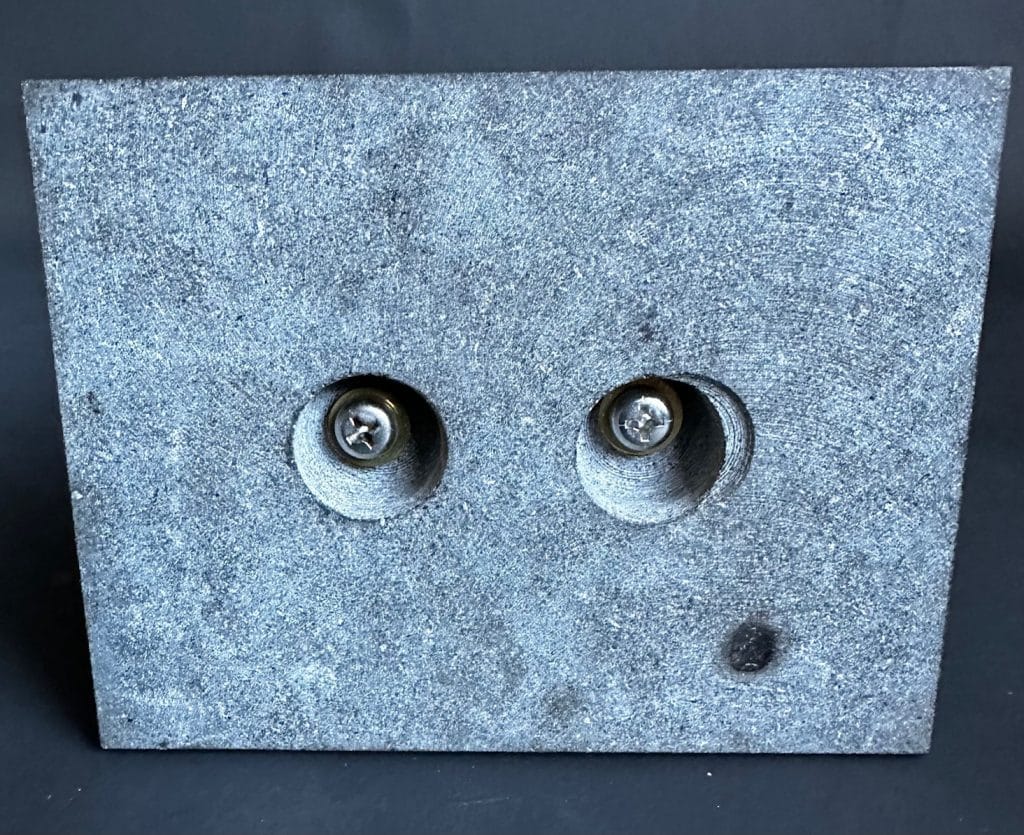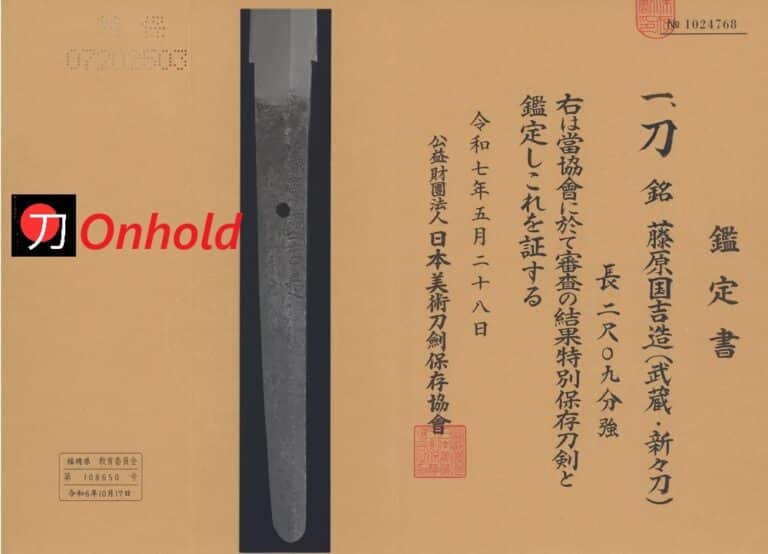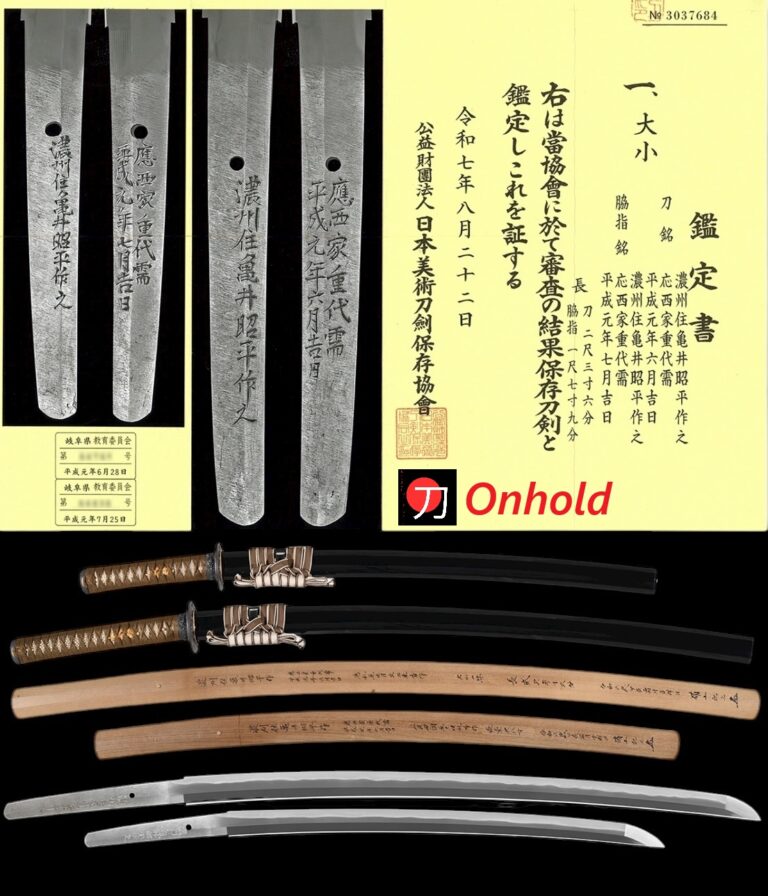Description
Kuno Takeshi (Ken Kuno) is the creator of this beautiful Japanese Buddha. Width 17.5 cm Depth 16 cm Height 60 cm Height including platform 63 cm With marble base Total weight 17.1 kg Certificate attached Statue of Buddhist Art. Yakushi Temple Collection Mock Buddha Ken Kuno, a scholar of the history of Buddhist sculpture, died on July 27 at a hospital in Shinjuku, Tokyo. He was 87 years old. Kuno was born on April 19, 1920 (Taisho 9) in Tabata, Shimotakinogawa, Tokyo Prefecture as the third son of Kuno Kamenosuke. After graduating from Mito High School in March 1942, he entered the Department of Aesthetics and Art History of the Faculty of Arts of the Imperial University of Tokyo in April of the same year. In September 1944 he entered the same graduate school, but dropped out on May 31 of the following year and was hired as an assistant at the Institute of Art of the Ministry of Education on the same day. In April 1952, he became an engineer in the art department of the Tokyo National Research Institute for Cultural Properties in accordance with the institute’s organizational regulations. In February ’67 he became a senior researcher at the Department of Fine Arts, National Research Institute for Cultural Properties, Tokyo, and in April ’69 he was promoted to head the First Laboratory of the Department of Fine Arts of the same institute. In April 1978, he became the first director of the Institute’s Information and Materials Department. He retired in March ’82. After his retirement, he founded and chaired the Institute of Buddhist Art next to his home, which was open to young researchers who wanted to join the institute and trained young researchers. It is widely accepted that Kuno’s research guided the history of Buddhist sculpture in post-war Japan. During his research at the National Research Institute for Cultural Properties in Tokyo, where he worked for a long time, he promoted the X-ray photography of Buddhist statues and presented an excellent view of the history of sculpture based on the results of his research. In other words, in light of the description in the “Japan Reiki”, he proposed that the occurrence of wooden statues in the early Heian period and the promotion of their support were made by private monks, and this theory is considered the day is still supported, although some changes have been made.


